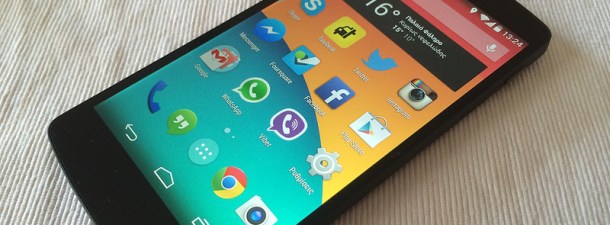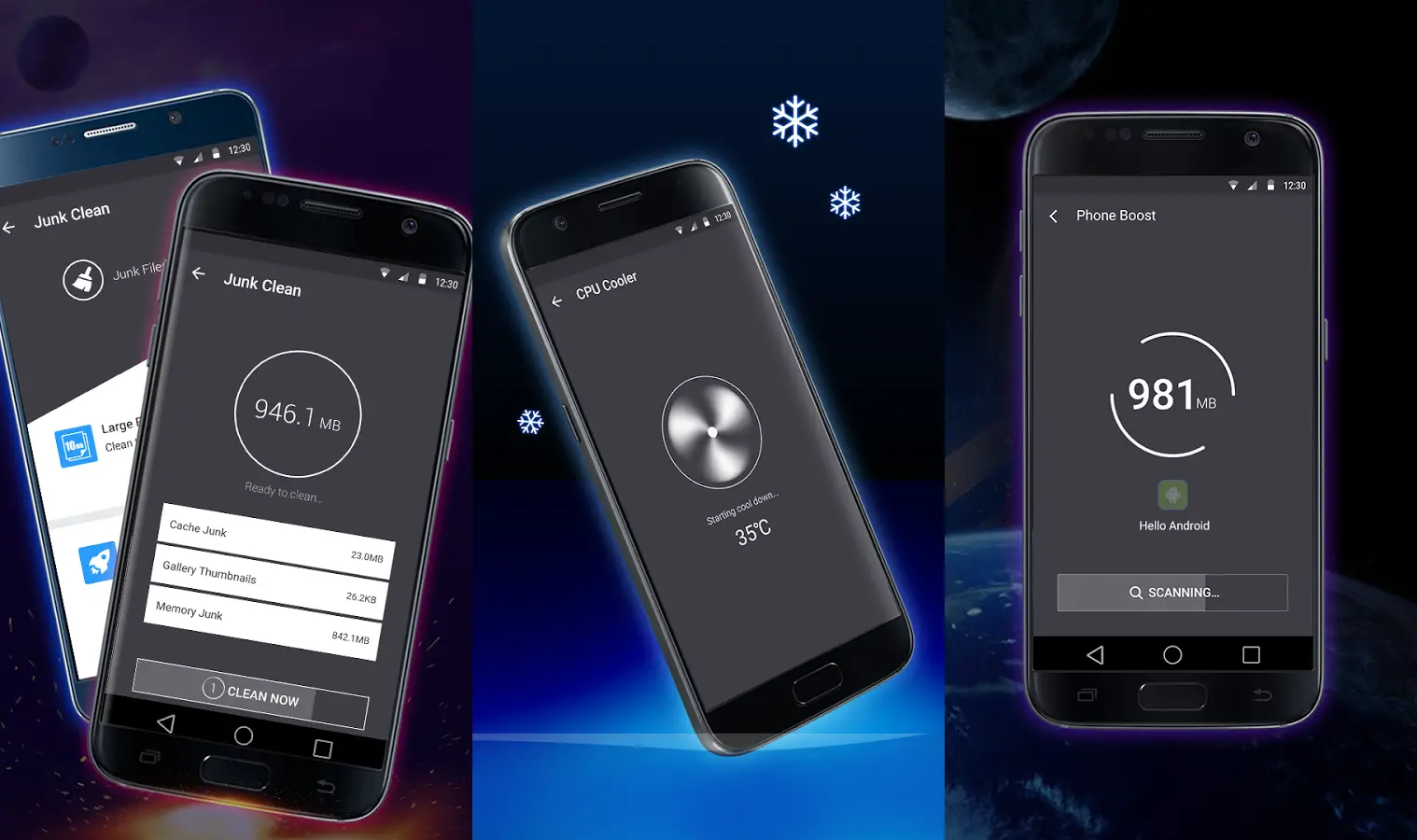Though 32GB, 64GB and 128GB of Android internal storage sounds large and adequate for daily use, it easily gets full in few years when you have lots of files piled up on your Android phone/tablet(especially apps and games, which might reach 100MB each). You know, we have dozens of apps installed on Android not to mention videos, music and photos. To avoid slow response, you need to get your Android phone a thorough cleanup. There are different methods provided for Android device users.
I have a Samsung s9 plus and the app that was taking up all my storage was My files (ironically). I went to settings/apps/My Files/Storage and the data was a whopping 6GB. I hit Clear Data and freed up the space. I'm not sure why a file browser would need to hold. Many apps can help you manage your phone’s storage and access deleted files, but for this article, I’ll recommend the Recycle Bin App. After you install it, you’ll be able to access the connected SD card or the internal memory through the app.
Solution 1: Free Up Android Space without Losing Anything
1. Compress photos. The first thing we can do to free up our Android space is to compress Android photos without sacrificing photo quality. There are many photo compressing apps offering for help. You just need to download one on your computer and have photos and videos on your Android device scanned. After that, the app will show you the original size of your photo album and the compressed size.
2. Move apps to SD card. Apps will be installed on your phone by default if you didn't choose to install apps on SD card. To move apps to SD card, you just need to go to 'Settings' > 'Storage' > 'Internal storage' > 'Apps' > find the app > hit on 'CHANGE' > 'SD card' > 'MOVE'.
Solution 2: Copy Files to PC or Cloud
1. Upload Photos to Google Photos. Google Photos allows you to upload photos onto cloud with either high quality or original one. You can also upload other files and documents to Google Drive and other cloud storage service.
2. Copy Files from Android to Computer. Make sure that the important files you want are included and back up your Android phone. Just simply back them up to your computer with Android data manager. After making sure that your Android phone data is copied, you can delete the photos, videos or music that is not frequently used from your Android. The deleted files are not gone forever, you can recover them back with FonePaw Android Data Recovery anytime you like.

Solution 3: Delete Useless Files or Uninstall Bloatware
1. Clear App Cache. As we use our Android app, some cache files on your Android phone will be added up. To get more space, you have to clear app cache from time to time. Go to 'Settings' > 'Apps' > choose the apps > hit on 'Storage' > 'CLEAR CACHE'.
2. Delete useless file folder. Another way to wipe Android files for more space will be deleting useless folders or files with Android file category direction.
3. Delete useless files with Root Explorer. Install Root Explorer and locate '/data/local' directory. Then, find the folder named 'rights' or 'tmp' and empty the folders. After that, the apps that failed to be installed will be erased.
4. Root Android and remove bloatware. There are many bloatware pre-installed on our Android phone, to get Android phone tidied up, we can root Android phone to get the superuser mode and you can now uninstall pre-install apps by going to 'Settings' > 'Apps' > choose the app > 'UNINSTALL'.
Solution 4: Factory Reset Android Phone
If the methods above don't work for you, you have to try to factory reset your Android phone: Go to 'Settings' > 'Backup & reset' > 'Factory data reset' or flash a new ROM for Android phone to get more Android phone.
As you can see, there are many useful way to free up Android space when the internal phone memory is full. Try them one by one to get more storage for your Samsung Galaxy S7/S6 Edge+/S6, HTC, Sony, Motorola and more Android phone and tablet.
- Media Storage on Android FAQ
- 4 Ways to Recover Deleted Media Storage Data on Android
What Is Media Storage on Android
Media Storage is a system process that is needed when you view, download, play, and stream images, videos, audio files, and other media files. As a system service, it is not available from your phone desktop. Then where is Media Storage in Android? You can access it from your phone:
Step 1. Go to 'Settings' > 'Apps'.
Step 2. Click the 'More (three dots)' button and choose 'Show system processes'. (the options may be slightly different on different phone models).
Step 3. After you open 'Media Storage', there are always several options shown, like Disable and Force Stop (when 'unfortunately app has stopped' error occurs, you can try to force stop it). If you click 'Storage', you will see another two options: Clear Data and Clear Cache.
Without knowing the details about these options, some users attempt to disable Media Storage or clear data in Media Storage, aiming to free up space on Android or save battery, only to find that their device cannot work properly or some files are missing. Can you disable Media Storage? Will clear data delete your photos, videos, or audio files? Read on to get the answer.
Frequently Asked Questions About Media Storage on Android
Many users feel confused about the options in Media Storage, here we will explain some of them in detail.
1. Can You Disable Media Storage?

No, you can't. As mentioned, this system process is needed when you download, play, or stream media like videos and audio files. If you disable the options, you won't be able to do things like viewing photos/videos, playing videos/music, and taking photos. Therefore, you cannot disable Media Storage with the purpose of extending the battery life of your device.
2. How to Enable Media Storage on Android?
If you have disabled Media Storage on your Android phone, you should re-enable it to make sure you can use your device as normal.
To enable Media Storage on Android:
Step 1: Go to 'Settings' > 'Apps' (> 'Apps').
Step 2: Click the three dots in the top-right corner and choose 'Show system processes'.
Step 3: You can search for 'Media Storage' and click the option.
Step 4: Click 'Enable' to re-enable the service.

3. Will Clear Data Remove Your Media Files?
No, it won't. When you click 'Clear Data' in Media Storage, all the app's data, including the files produced during the using of the service, settings, accounts, database, and more will be deleted permanently (if you want to recover the deleted files, you can use the Android data recovery software - EaseUS MobiSaver to have a try). It WON'T remove the media files stored on your device like your photos, videos, and audio files. If the media files are gone or missing after you choose 'Clear data', it's probably because you have accidentally disabled Media Storage. Have a check on the option and make sure Media Storage is enabled.
How to Recover Deleted Media Storage Data on Android?
If you are sure that your media files are lost after your misoperation under Media Storage, don't worry. You still have the chance to recover them. Here we've listed 4 methods, try them one by one to recover your deleted Android data.
Method 1: Restart Your Android Device
Storage Cleaner For Android
If you're trying to get back all the sounds, simply restart your phone and this will bring all ringtones and gallery pictures back. It's a matter of the Android OS restoring metadata during the restart.
Method 2: Sync Lost Data from Your Google Account
Tap on 'settings' > 'Applications' > 'Accounts' > 'Google account', uncheck the boxes for sync and check the boxes again. In this way, the cleared data is synced again and will reappear in Media Storage.
Method 3:Find Cleared data in lost.dir folder
If reboot your Android device does not help you find lost data files back, you can try to locate lost.dir folder and look for the lost files there.
Method 4:Download Android data recovery software
Still, none of the methods above finds your lost media files? It's time to apply the best Android data recovery software to recover deleted files from media storage.
Option 1: Recover Lost Files from Android SD Card
If the files lost are saved on your Android SD card, you can apply the hard drive recovery software - EaseUS Data Recovery Wizard to recover them.
Step 1. Run SD card recovery software and scan the card.
Clean Internal Memory Android
Launch EaseUS Data Recovery Wizard on your PC and select your SD card. Then click 'Scan' to start finding lost data on your SD card.
Step 2. Check found SD card data.
After the scanning process, you can click 'Filter' to quickly find wanted files.
Step 3. Restore SD card data.
You can check and preview found files by double-clicking each one of them. Then click Recover to save found SD card files to a secure location on your PC or external storage.
Option 2: Recover Lost Files from Android Internal Storage
To recover your lost photos, videos, or songs from the internal storage of your Android phone, you will need the Android data recovery software - EaseUS MobiSaver. (The prerequisite to recovering data from your Android device is that the phone has been rooted.)

Step 1: Download and install EaseUS MobiSaver for Android on a Windows PC.
Step 2: Connect your Android device to the computer with a USB cable.
Step 3: Run EaseUS MobiSaver for Android and click 'Start' button.
Step 4: Scan Android to find all lost data files.
Step 5: Browse the files in the categories of Gallery, videos, audio and more, and click 'Recover' button to get them all back.
The Bottom Line
Clean Android Phone Memory
Knowing the importance of Media Storage, you won't easily disable this system process next time you want to clean up your Android phone or save battery on your device. To prevent yourself from disabling needed system processes, you can hide the system processes via Settings. Hope the information presented in this article is useful to you.




